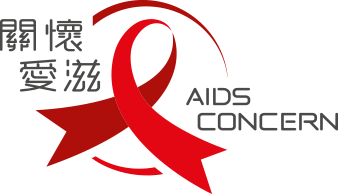HIV Combination Prevention
The Joint United Nations Programme on HIV/AIDS (UNAIDS) supports a combination of approaches to prevent the transmission of HIV, which includes but is not limited to correct and consistent condom use, regular HIV testing, the adoption of Pre-exposure prophylaxis (PrEP) and Post-exposure prophylaxis (PEP), maintaining an undetectable viral load and negotiated safety, etc.. People living with HIV or people at high-risk of acquiring HIV should adopt a combination of approaches that best fits their needs to prevent transmission.
According to the Recommended HIV/AIDS Strategies for Hong Kong (2017-2021) from Advisory Council on AIDS, no single HIV prevention strategy will be sufficient to control the HIV epidemic. In order to prevent HIV transmission, AIDS Concern recommends people at risk of infection to use at least two of the above approaches.
Condoms, when used correctly and consistently, are highly effective in preventing HIV. Up to now, condoms are treated as a key component of comprehensive HIV prevention 1 .
The only way to determine a person’s HIV status is to have an HIV test. Therefore, we encourage people who have ever had unsafe sex to have an HIV test immediately after the Window Period. People at risk of HIV infection could take an HIV test every 6 months 2 . HIV test and Voluntary Counseling & Testing are available from the Government and certain non-governmental organizations. Additionally, there are 4 types of self-testing kits that are approved by the Global Harmonization Task Force on Medical Devices (GHTF) around the world 3 , and we are also providing counseling and follow-up services to those who take the self-test for HIV.
PrEP can effectively reduce the risk of being HIV-infected through sexual activities. Having solid evidence on the effectiveness of PrEP 4 5 , both the Centers for Disease Control and Prevention (CDC) and World Health Organization (WHO) regard PrEP as an important measure for preventing HIV.
Click Pre-exposure prophylaxis to know more .
PEP is the use of anti-HIVmedications, and can effectively reduce the risk of infection by up to 81% within 72 hours after exposure to HIV 6 .
Antiretroviral therapy, when done continuously and correctly, can effectively reduce the quantity of the virus in people living with HIV to an undetectable viral load. This reduces the risk of transmitting HIV to others 7 . According to the research of PARTNER Study 8 , the chance of transmission by a people living with HIV with an undetectable viral load is minimal. Thus, receiving proper treatment as early as possible can effectively manage the body condition and prevent transmission of HIV.
Negotiated safety requires open communication between partners and regular HIV testing. Partners should discuss their willingness for using condoms and understand each other’s feeling. Also, both parties should get tested for HIV regularly. If partners decide to have sex without using condoms, they should get tested to make sure that they are not infected with HIV (consistent use of condoms is necessary during the Window Period).
*The above approaches are only for HIV prevention but not other STIs.
[1] Joint United Nations Programme on HIV/AIDS (2015). FAST-TRACKING COMBINATION PREVENTION. Available at: http://www.unaids.org/sites/default/files/media_asset/20151019_JC2766_Fast-tracking_combination_prevention.pdf
[2] Joint United Nations Programme on HIV/AIDS (2015). Combination HIV Prevention: Tailoring and Coordinating Biomedical, Behavioural and Structural Strategies 10 to Reduce New HIV Infections. Available at: http://www.unaids.org/sites/default/files/media_asset/JC2007_Combination_Prevention_paper_en_0.pdf
[3] Joint United Nations Programme on HIV/AIDS (2017). Public health and HIV viral load suppression. Available at: http://www.unaids.org/sites/default/files/media_asset/20170724_viral_load_suppression_brochure.pdf
[4] Dara A Lehman. (2015) Risk of drug resistance among persons acquiring HIV within a randomized trial of single-or-dual-agent pre-exposure prophylaxis. Journal of Infectious Disease, Vol 11, Issue 8, pp.1211-1218
[5] Anderson PL, Glidden DV, Liu A, et al. (2012) Emtricitabine-tenofovir concentrations and preexposure prophylaxis efficacy in men who have sex with men. Science Translational Medicine. Vol 4, Issue 151.
[6] Centres for Disease Control and Prevention. (Jan 2005). Antiretroviral Postexposure Prophylaxis after Sexual, Injection-Drug Use, or Other Nonoccupational Exposure to HIV in the United States: Recommendations from the U.S. Department of Health and Human Services. Available at: http://www.cdc.gov/mmwr/preview/mmwrhtml/rr5402a1.htm
[7] Rodger A. Association between sexual activity without condoms and risk of HIV transmission in serodifferent couples when the HIV-positive partner is using suppressive antiretroviral therapy: the PARTNER study. 21st International AIDS Conference, Durban, abstract TUAC0206, 2016.
[8] Rodger A et al. HIV transmission risk through condomless sex if HIV+ partner on suppressive ART: PARTNER study. 21st Conference on Retroviruses and Opportunistic Infections, Boston, abstract 153LB, 2014.
[9] ACON (2017). Know Your Risk | Ending HIV. Available at: https://endinghiv.org.au/nsw/stay-safe/risk-reduction-strategies/ .

